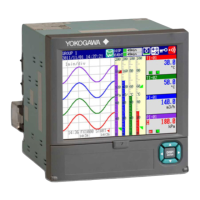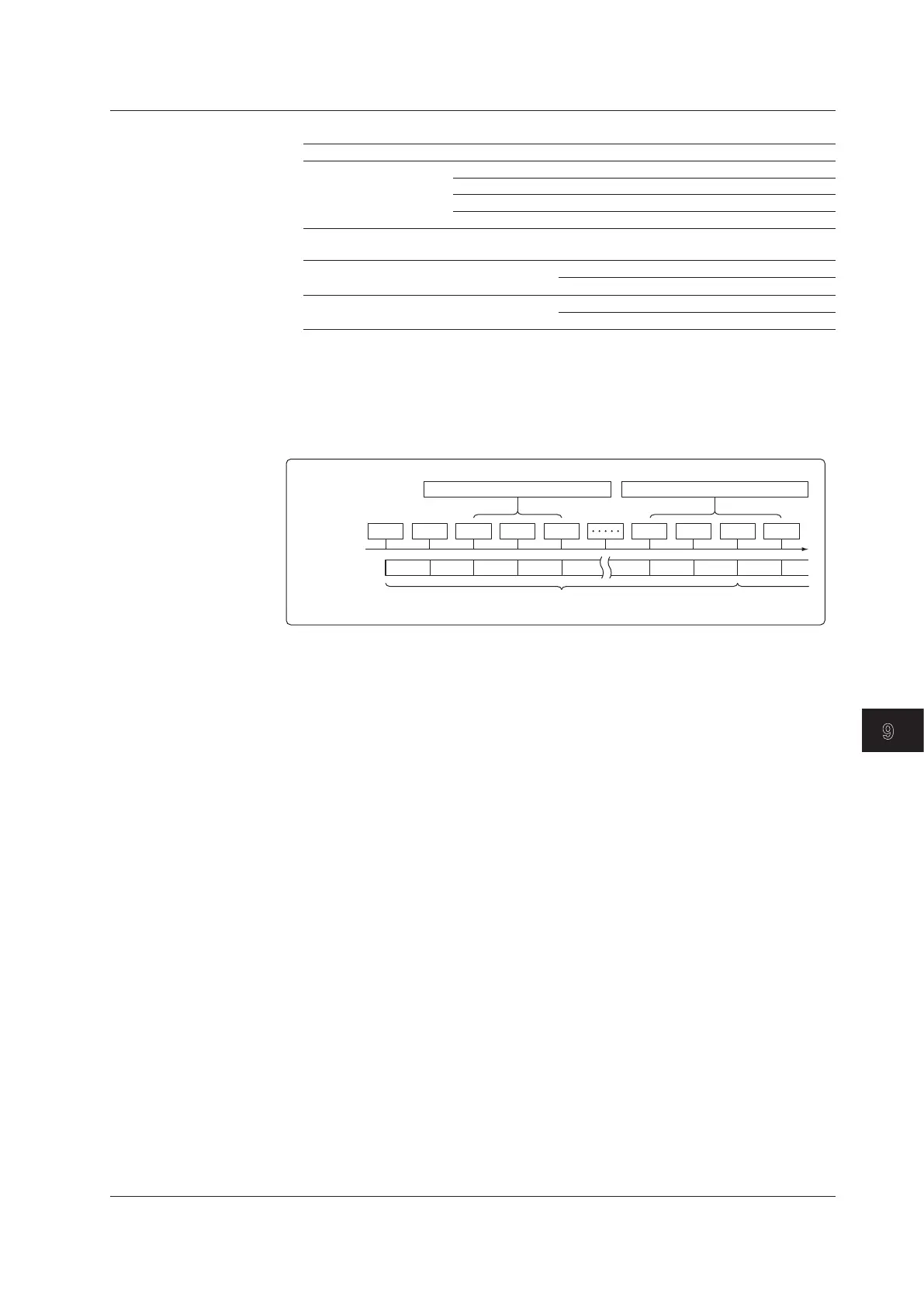9-21
IM 04L42B01-01E
Computation and Report Functions (/M1 and /PM1 Options)
9
• Parameters
Parameter Format Range Description
Report kind Hour Hourly report
Day Daily report
Week Weekly report
Month Monthly report
Report channel number Rxx
(xx are numerals)
R01 to R60
(varies by model)
DX report channel
Start date or time xx
(xx are numerals)
00 to 23 Specifies the start time
01 to 31 Specifies the start date
End date or time xx
(xx are numerals)
00 to 23 Specifies the end time
01 to 31 Specifies the end date
StartingandEndingDatesandTimes
Use the start date and time and end date and time to specify the parts of the report
file’s report data that you will output to the file that you create with the template. You can
specify the starting and ending dates (for daily reports) or times (for hourly reports).
Example when the report type is hourly and the report was created at 18:00.
18:00 19:00
Report file 1
Report file 2
Report
creation time
$ReportDataSum(Hour,R01,20,22)$
$ReportDataSum(Hour,R01,16,19)$
20:00 21:00 22:00 16:00 17:00 18:00 19:00
Keyword:$ReportDataSum(Hour,R01,20,22)$
From the hourly data from 19:00:01 to 22:00:00, the report data (sums) of report
channel R01 for 20:00, 21:00, and 22:00 is output.
Keyword:$ReportDataSum(Hour,R01,16,19)$
From the hourly data from 15:00:01 to 19:00:00, the report data (sums) of report
channel R01 for 16:00, 17:00, and 18:00 is output. Because the report data for
19:00 is in another report file, it is not output.
Keyword:$ReportDataSum(Hour,R01)$
One file’s worth (18:00:01 to 18:00:00) of data from report channel R01 is output,
starting from 19:00.
When you omit the start and end times for an hourly report, the data for the hour
after the report creation time until the 24th hour is output. For daily reports, the data
for the day after the report creation time until the end of the month is output.
Keyword:$ReportDataSum(Hour,R01,08)$
From the hourly data from 07:00:01 to 18:00:00, the report data (sums) of report
channel R01 for 08:00 to 18:00 is output.
9.6CreatingaReportTemplate(Releasenumbers4andlater)

